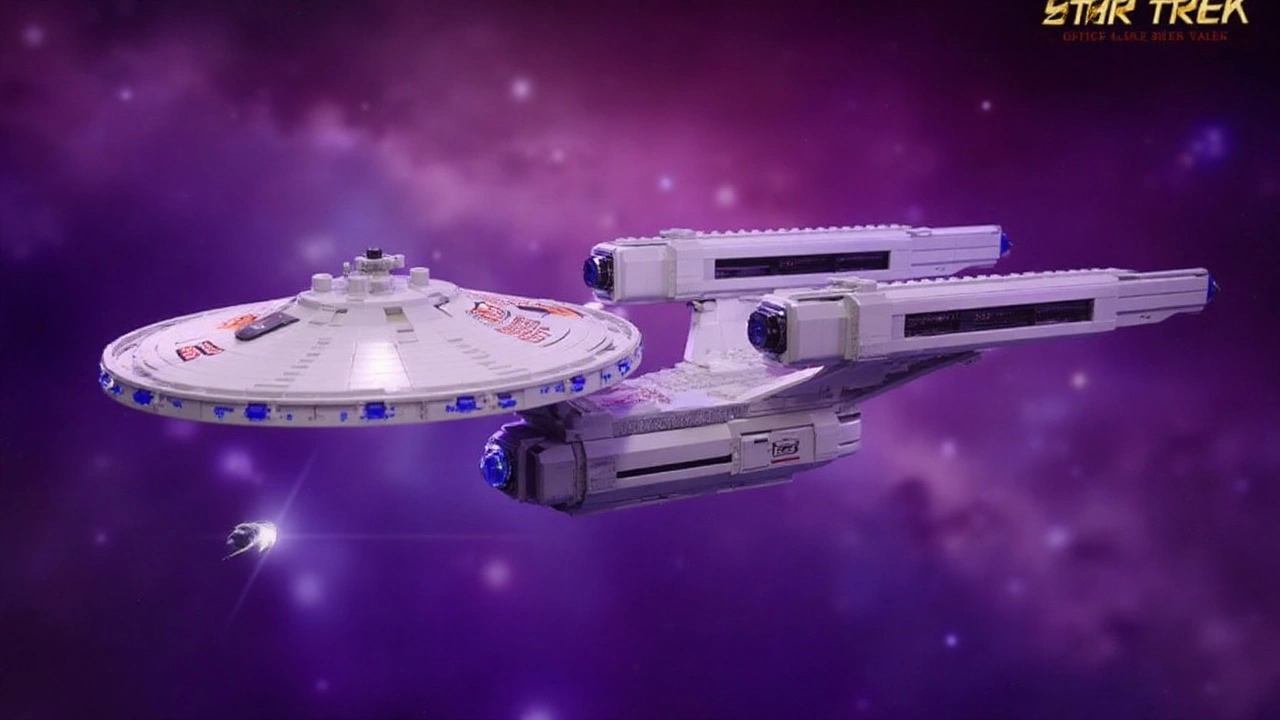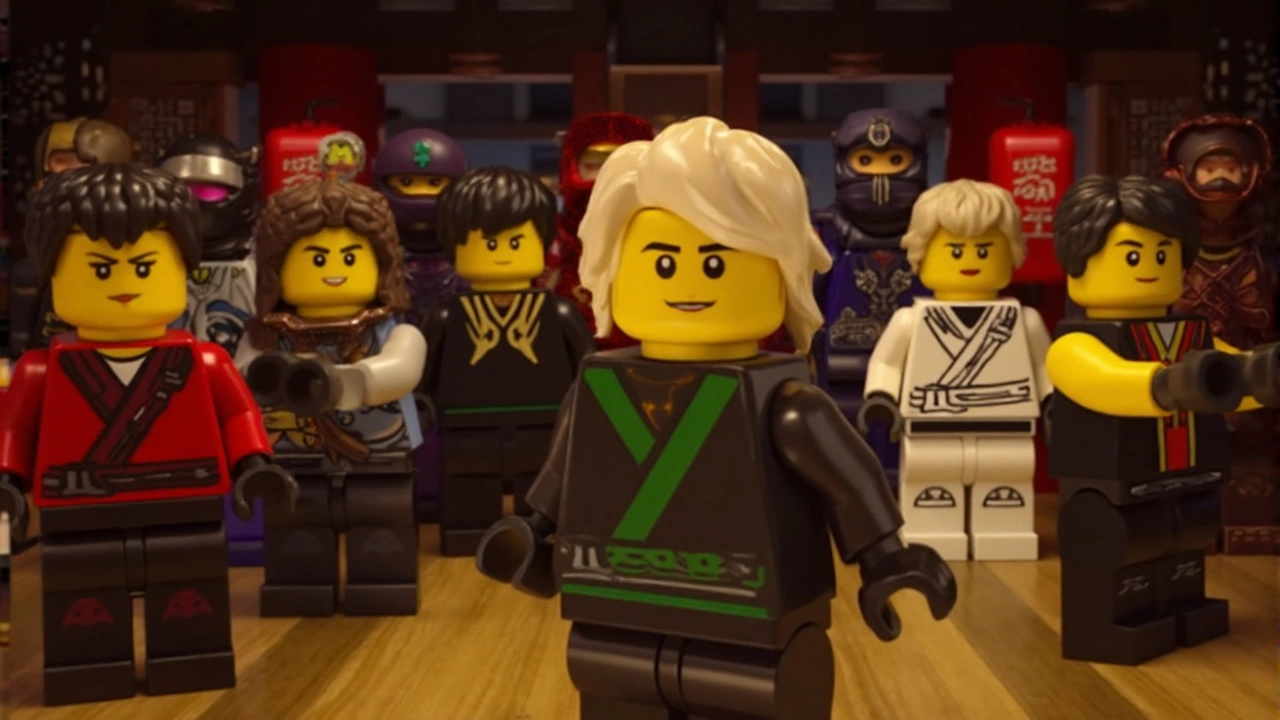Universal taps the Ninjago originals for a live-action leap
Universal Pictures is moving ahead with a live-action take on LEGO Ninjago, and it’s bringing in the franchise’s most trusted voices to write it: brothers Kevin and Dan Hageman. The pair helped create the TV series that turned Ninjago from a toy line into a world-sized story back in 2011, then went on to run Star Trek: Prodigy. Now they’re steering the first-ever live-action trip to Ninjago.
The studio hasn’t shared plot details, and no actors are attached yet. Jill Wilfert and Ryan Christians will produce for The Lego Group, with Universal’s Executive Vice President of Production Development Matt Reilly and Director of Production Development Jacqueline Garell overseeing. The project is early, but the signal is clear: Universal wants Ninjago on the big screen in a new way.
This film lands as the fourth live-action LEGO title in Universal’s growing slate. Three other projects are underway with heavyweight filmmakers: Jake Kasdan (Jumanji: Welcome to the Jungle), Patty Jenkins (Wonder Woman), and Joe Cornish (The Kid Who Would Be King). Each is developing a separate movie, pointing to a larger strategy rather than a one-off experiment.
Why the Hagemans? Because they know this world inside and out. They helped launch the original Ninjago series, co-writing early seasons that mixed serialized storytelling with sharp comedy and kid-friendly mythmaking. Their later work ranges from Trollhunters (which earned them an Emmy) to the feature Scary Stories to Tell in the Dark with Guillermo del Toro and Lionsgate, plus adapting Dragon’s Lair at Netflix. They also kept their sci-fi chops sharp on Star Trek: Prodigy, which shifted from Paramount+ to Netflix and continued its life with a fresh audience.
Ninjago started as ninja-themed construction sets and quickly turned into one of LEGO’s stickiest hits. The TV series introduced Lloyd, Kai, Jay, Cole, Zane, and Nya—teens who balance training, friendships, and saving their realm from threats like the Serpentine, Lord Garmadon, and the Overlord. Mechs, dragons, and elemental powers gave it scale; humor and heart kept it grounded. Along the way, it spun off into video games, comics, and a 2017 animated movie released by a different studio.
That 2017 theatrical, The LEGO Ninjago Movie, was animated and stylized, and while it brought the brand to cinemas, it didn’t become the runaway hit that The LEGO Movie and The LEGO Batman Movie were. A live-action approach changes the equation. It raises questions, too. Do you stage Ninjago as a human-led adventure in a world where LEGO exists, or lean into a hybrid look with mini-fig scale and big practical builds? Universal isn’t saying yet, but the Hagemans’ track record suggests they’ll find a crowd-pleasing middle ground.
Timelines remain fluid. Fans have traded rumors of a 2027 window, which is plausible for a VFX-heavy tentpole in early development, but Universal hasn’t confirmed anything. Expect a writing and design phase first, then a director announcement, followed by casting and a long pre-production runway for action design, creature and mech development, and worldbuilding.
The first hurdle is tone. Ninjago has always threaded martial-arts action with slapstick and sincerity. Translating that to live action means getting three things right: clear fight choreography, a family-forward story that still plays for teens, and a visual language that honors LEGO without feeling like a novelty. If Universal nails those pieces, the brand loyalty is there. Multiple generations grew up with Masters of Spinjitzu and its successors; they’ll show up if the movie feels authentic.

Inside Universal’s bigger live-action LEGO strategy
Universal’s plan isn’t a one-movie bet. The studio is stacking a slate. Jake Kasdan knows how to reboot a family adventure engine—his Jumanji films revived a ’90s brand with humor, set pieces, and a modern cast mix. Patty Jenkins can deliver large-scale hero stories with emotional stakes. Joe Cornish blends kid-eye fantasy with practical action, as he proved in Attack the Block and The Kid Who Would Be King. Each filmmaker hints at a different tone and genre lane within the LEGO umbrella.
That variety matters after the last decade of LEGO on film. Warner Bros. turned The LEGO Movie into a cultural moment in 2014 and spun off The LEGO Batman Movie in 2017. But box office momentum softened by The LEGO Ninjago Movie (2017) and The LEGO Movie 2 (2019). Universal later became LEGO’s home for new films, and shifting to live action offers a reset: new aesthetics, new storytelling rules, and new reasons for audiences to buy a ticket.
This also fits the wider trend of toy and game IP punching above its weight at the box office. Look at the recent wave: Barbie refocused Mattel’s strategy, Dungeons & Dragons: Honor Among Thieves reminded studios that four-quadrant fun can win on word of mouth, and Transformers keeps reinventing itself with fresh style and lore. Studios want brands with built-in awareness, but they also want filmmakers who can push those brands into stories that feel personal, not prepackaged. That’s the needle Universal says it’s trying to thread.
For Ninjago, the production challenges are obvious and solvable. Sets will need to blend real locations with stylized architecture and big fantasy elements. Mechs and dragons could mix practical builds, miniatures, and CG, giving action scenes weight. Costumes and props should nod to the toys’ clean lines and the show’s elemental motifs—without turning the actors into stiff, plastic-looking figures. The Hagemans’ scripts will likely create a character-first core—family ties, mentors and rivals, training and trust—then wrap that core in escalating, effects-driven action.
There’s also a marketing edge here. Ninjago has a clear icon set: the green ninja, golden weapons, the Destiny’s Bounty, Spinjitzu, and a rogue’s gallery fans recognize at a glance. Those elements power trailers, posters, and merchandise while still leaving room to surprise with new villains or fresh spins on Garmadon and the Overlord. If Universal wants a franchise starter, planting hooks for sequels and streaming spin-offs is straightforward—especially with The Lego Group directly producing.
The talent pipeline around the project hints at how Universal may phase the slate. A Kasdan film could lean into adventure-comedy, Jenkins might bring a mythic hero arc, and Cornish could go grounded fantasy with kids-at-the-center energy. Ninjago slots into the action-fantasy lane, where martial arts and FX can play worldwide. Staggering these releases would give the studio year-round footholds in the family market without flooding it.
So what’s next? The writers polish their draft. Universal courts a director who can handle scale and tone—someone comfortable with action units, second-unit heavy shoots, and extensive previsualization. Casting will be a signal moment, especially if the film aims to bridge longtime fans with newcomers by centering a young ensemble that can carry multiple entries. Expect a long VFX pre-production to lock designs for mechs, creatures, and environments before cameras roll.
For now, the logline is simple: Universal is betting big on live-action LEGO, and the people who know Ninjago best are mapping the path. There’s no cast, no release date, and no logline to dissect yet. But the foundation—franchise familiarity, brand backing, and a studio-wide plan—is in place. Keep an eye on the director choice and early art reveals; those will tell you exactly how wild, weird, and ambitious this new Ninjago will be.
